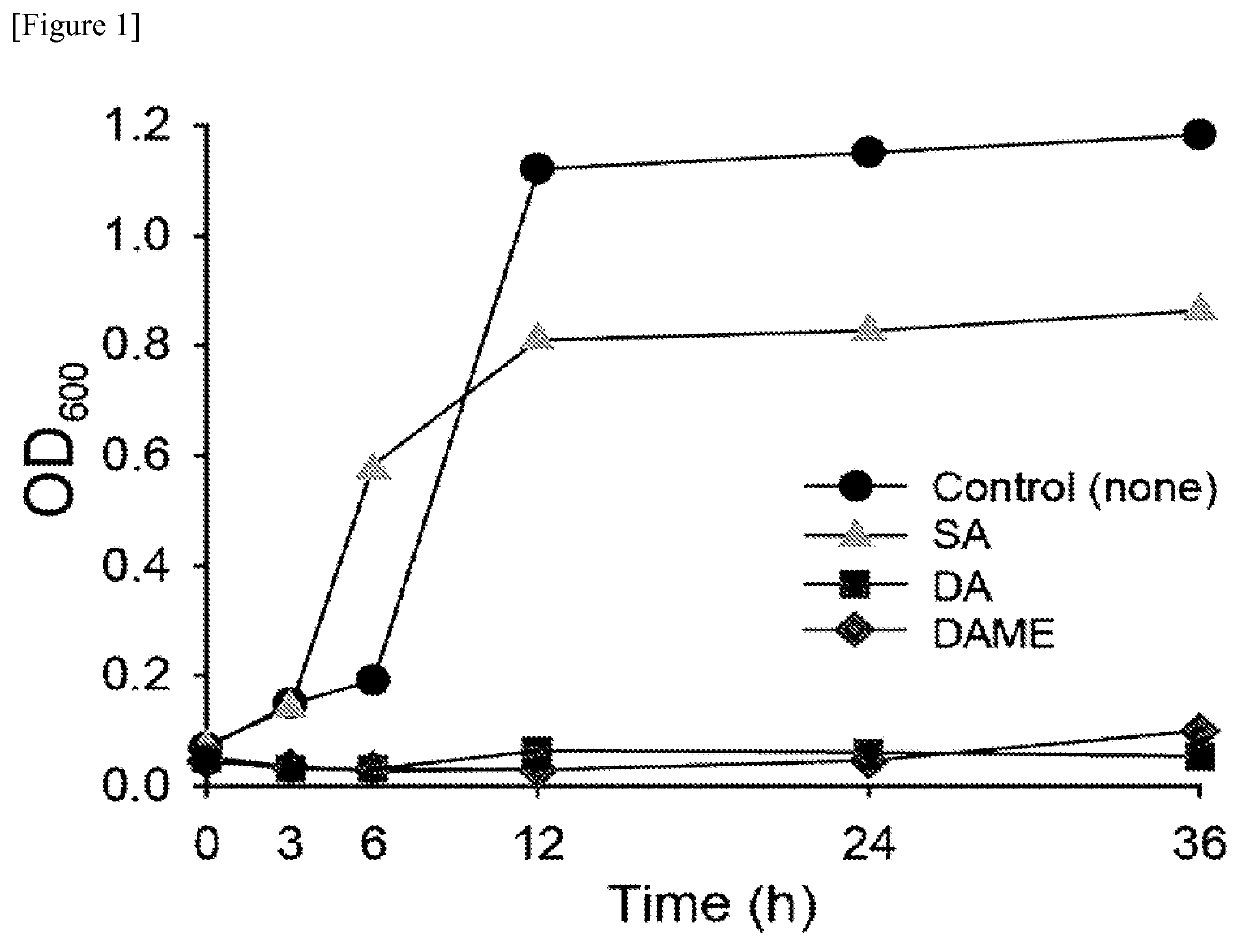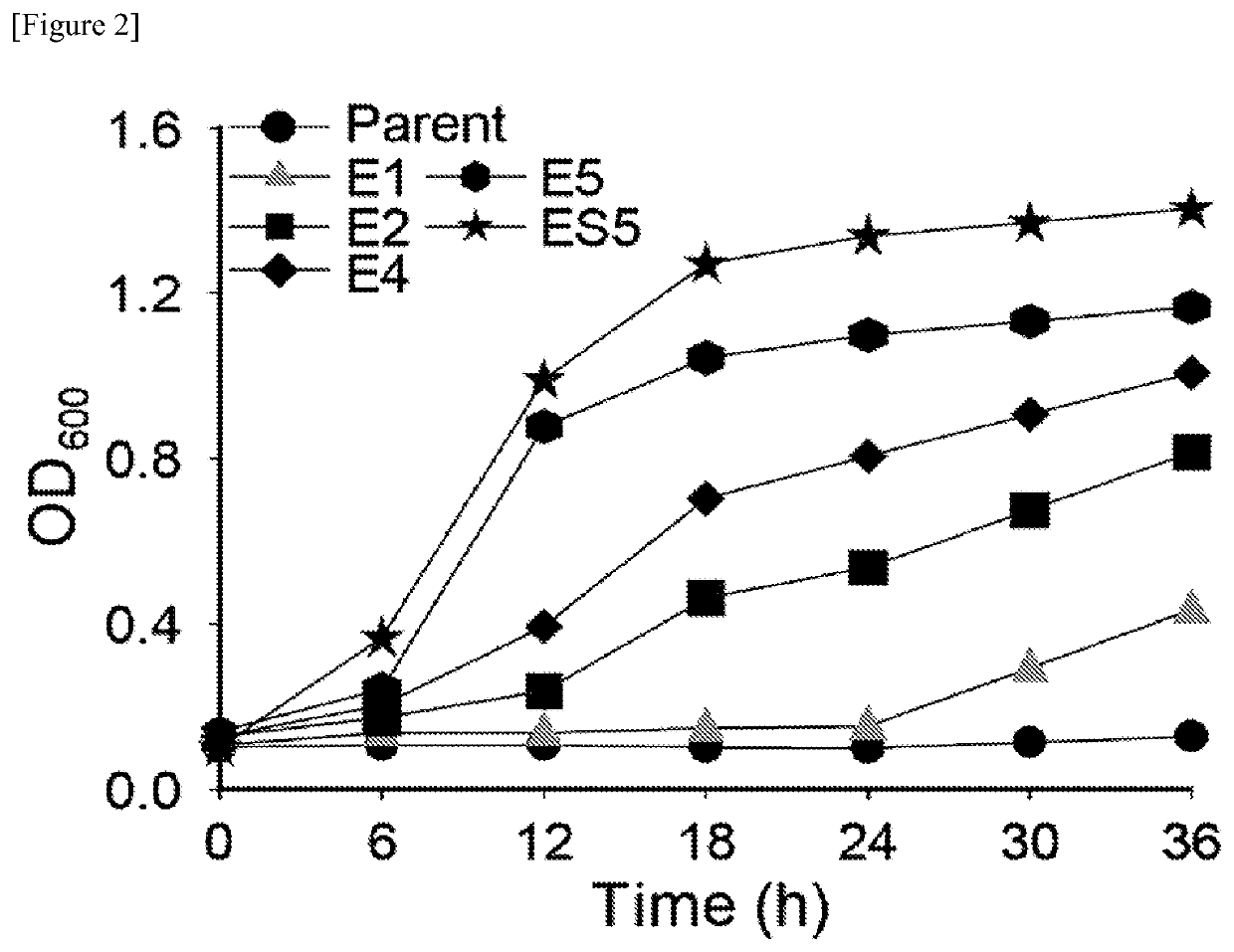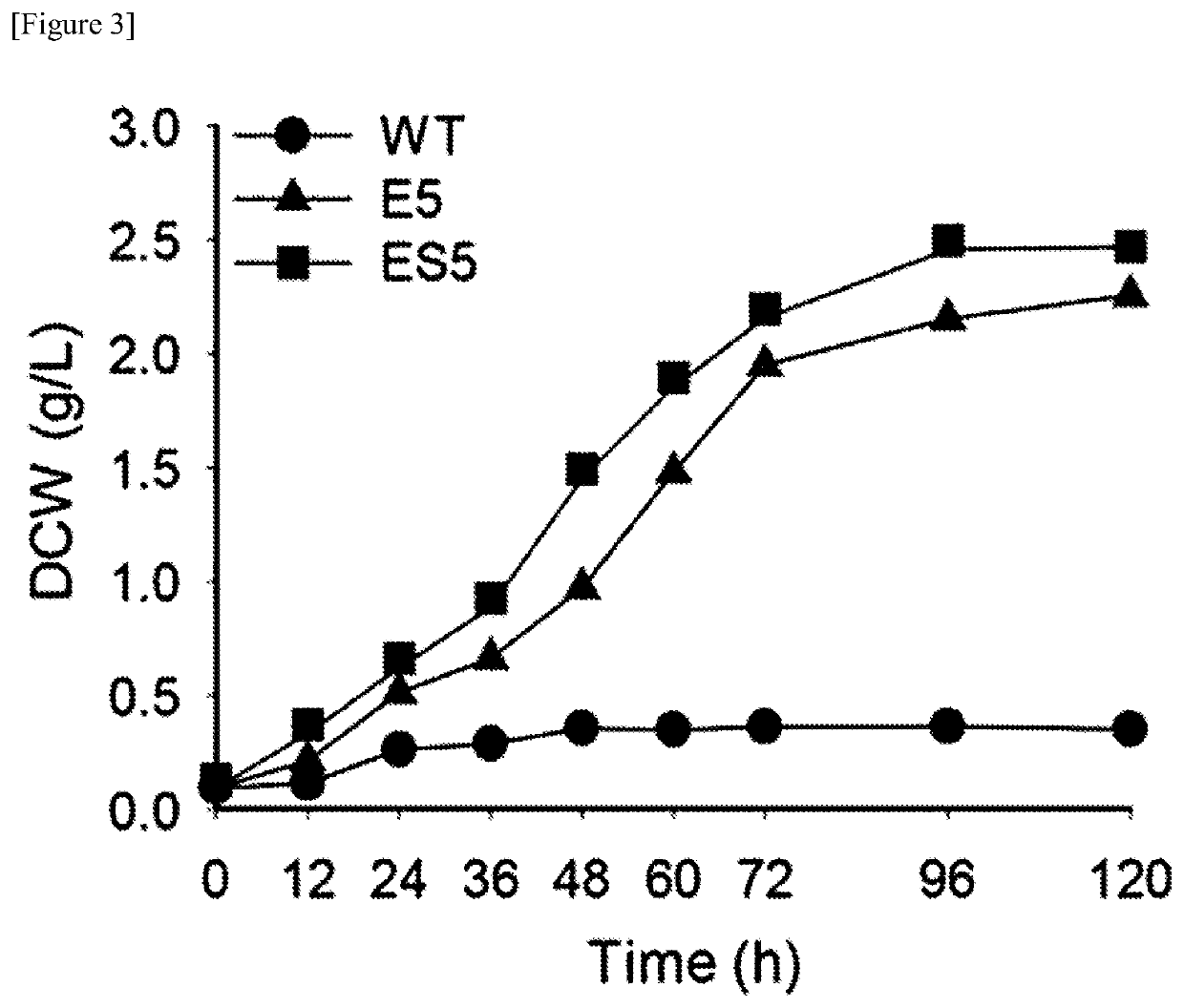Microorganism for producing dicarboxylic acid, and method for producing dicarboxylic acid using same
- Summary
- Abstract
- Description
- Claims
- Application Information
AI Technical Summary
Benefits of technology
Problems solved by technology
Method used
Image
Examples
example 2
[Example 2] Development of DAME-Tolerant Strain Using Evolutionary Engineering Method
[0040]To develop a strain having tolerance to DAME, which is a substrate having cytotoxicity, a C. tropicalis MYA_3404 strain was incubated in a YNB medium (10 g / L of a yeast extract and 20 g / L of peptone) to which DAME was added at a concentration of 10 g / L. In this case, it was confirmed that a concentration of DAME in the medium was maintained to be approximately 0.45 g / L (maximal solubility) due to the low solubility of the DAME substrate (confirmed through the results of internal experiments). The growth curve of the inoculated strain was determined by measuring an absorbance value at a wavelength of 600 nm.
[0041]The absorbance of the medium in which the strain was inoculated was observed in real time, and the strain was then sub-cultured in a fresh medium until the growth of the strain reached a mid-exponential phase. A specific growth rate was calculated from the measured absorbance value, an...
example 3
[Example 3] Confirmation of Phenotypic Changes of Parent Strain (WT) and Mutant Strains (E5 and ES5)
[0044]The actual amounts of DAME substrate consumption and amounts of sebacic acid production of the mutant strains E5 and ES5 obtained in Example 2 were compared to those of the parent strain (WT). To determine the DAME substrate consumption and the sebacic acid productivity, each of the WT, E5, and ES5 strains was incubated in a YNB medium to which DAME was added at a concentration of 10 g / L at a temperature of 30° C. for 120 hours.
[0045]The samples for analysis were collected every 12 hours or 24 hours to analyze concentrations of DAME and sebacic acid in the medium using gas chromatography / mass spectrometry (GC / MS). The GC / MS conditions are as listed in the following Table 1.
TABLE 1ParametersConditionsCarrier gasHeliumOven temperature100° C. for 3.5 min80-160° C. at 15° C., ° C. / min held for 20 min160-200° C. at 15° C., ° C. / min held for 15 min200-280° C. at 15° C., ° C. / min held ...
example 4
[Example 4] Transcriptome Analysis of DAME-Tolerant Mutant Strain (ES5)
[0047]To check a change of a transcriptome in media with and without DAME, the transcriptomes of an ES5 strain grown in a medium supplemented with DAME and an ES5 strain grown in a DAME-free medium were analyzed.
[0048]The ES5 strains were incubated in a DAME-free YNB medium and a YNB medium supplemented with 10 g / L of DAME at 30° C. for 24 hours. The incubated cells were collected, and washed with water. Thereafter, the collected cells were used as a sample for whole RNA extraction. The RNA extraction was performed using an RNeasy Mini Kit (Qiagen, Hilden, Germany), and the concentration and purity of the extracted RNA were measured using NanoDrop (Thermo Scientific, Wilmington, Del., USA) and Agilent Bioanalyzer 2100 (Santa Clara, Ca, USA), respectively.
[0049]The transcriptome of the mutant ES5 strain was analyzed, and compared with that of the parent strain. As a result, it was confirmed that a total of 453 gen...
PUM
| Property | Measurement | Unit |
|---|---|---|
| Electrical resistance | aaaaa | aaaaa |
| Cytotoxicity | aaaaa | aaaaa |
Abstract
Description
Claims
Application Information
 Login to View More
Login to View More - R&D
- Intellectual Property
- Life Sciences
- Materials
- Tech Scout
- Unparalleled Data Quality
- Higher Quality Content
- 60% Fewer Hallucinations
Browse by: Latest US Patents, China's latest patents, Technical Efficacy Thesaurus, Application Domain, Technology Topic, Popular Technical Reports.
© 2025 PatSnap. All rights reserved.Legal|Privacy policy|Modern Slavery Act Transparency Statement|Sitemap|About US| Contact US: help@patsnap.com



